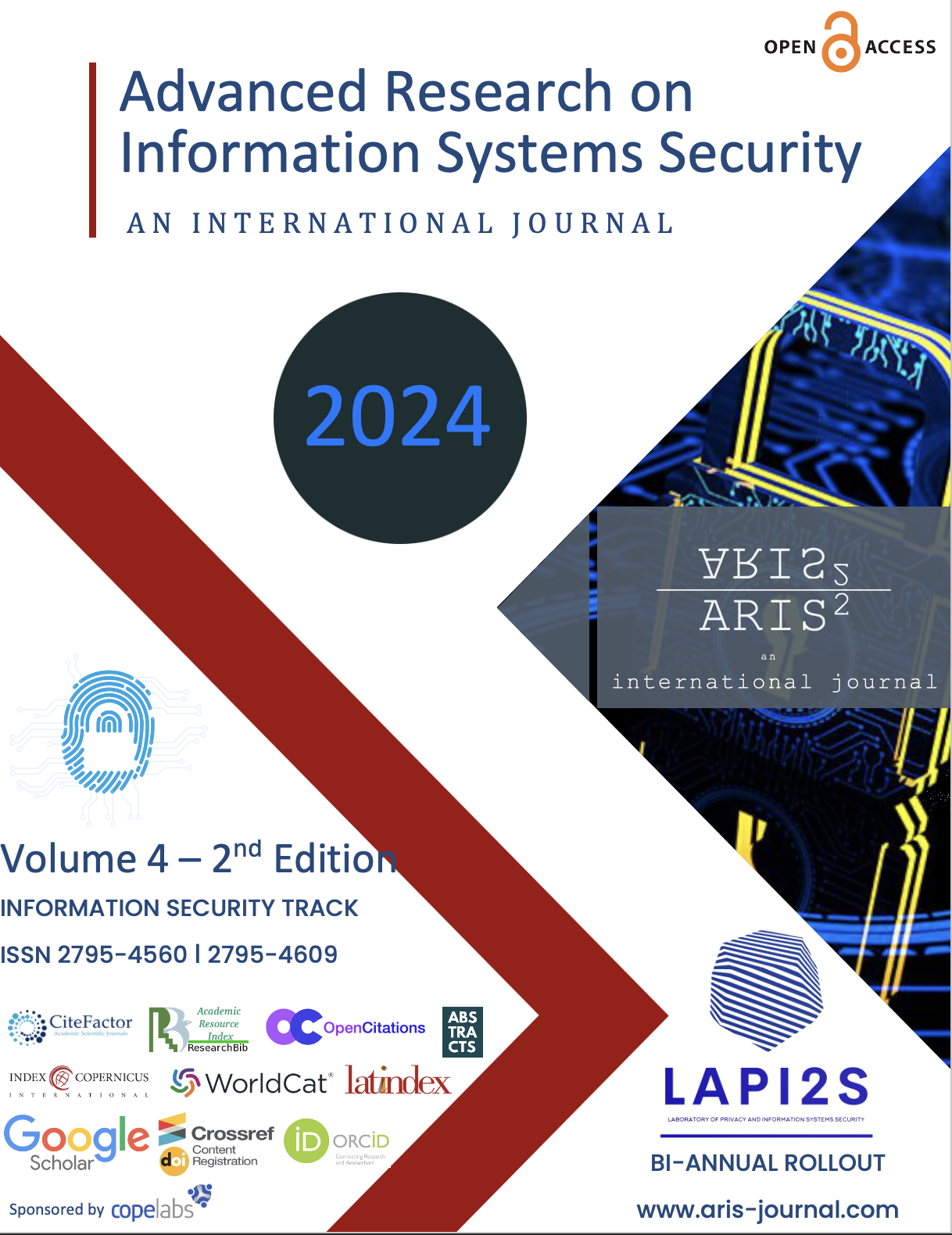Dependable Concealing Algorithm of E-apps Repositories Combined with a Robust Blockchain Approach
DOI:
https://doi.org/10.56394/aris2.v4i2.48Keywords:
Big repository data management, ECIES cryptography, DRBG, hybrid blockchain, Whirlpool functionAbstract
Managing repositories data, whether in terms of security or storage, especially if the data is vast, is thought to be a necessary and crucial problem given the great and quick evolution occurring in the field of technology and the growth in data volume that is dealt with on a daily basis. Thus, we designed an approach in this study that offers storage/repository management in addition to security. Whereas the Whirlpool function and elliptic curve integrated encryption scheme (ECIES) support the security problem in our proposed approach. Furthermore, our approach's security methods are supported by the fast deterministic random bit generator (DRBG). To handle storage for this kind of massive data, a hybrid blockchain is used to regulate the repository storage. The data is vulnerable to loss or intrusion whether it is stored in databases or using any other conventional centralized technique. As a result, the hybrid form of Blockchain has been determined to be quite suitable for our approach as it allows data distribution across both private and public domains. Upon examination of the suggested approach, it effectively tackled the defense against assaults like CryptoWall, Locky, SamSam, GandCrab, and Petya. Furthermore, the lightweight Whirlpool and ECIES findings showed that our approach's performance analysis was highly successful, and the block formation time during the storage phase was just 0.18 ns. As a result, we were able to acquire an efficient approach for data repository administration and control, security, and performance.
References
M. Z. Khan, M. U. Khan, O. Irshad, O., and R. Iqbal, "Deep learning and Blockchain fusion for detecting driver's behavior in smart vehicles," Internet Technology Letters, 3(6), e119, 2020. https://doi.org/10.1002/itl2.119. DOI: https://doi.org/10.1002/itl2.119
P. Velmurugadass, S. Dhanasekaran, S. S. Anand, and V. Vasudevan, "Enhancing Blockchain security in cloud computing with IoT environment using ECIES and cryptography hash algorithm," Materials Today: Proceedings, 37, 2653-2659, 2021. https://doi.org/10.1016/j.matpr.2020.08.519. DOI: https://doi.org/10.1016/j.matpr.2020.08.519
I. L. H. Alsammak, M. F. Alomari, I. S. Nasir, and W. H. Itwee, "A model for Blockchain-based privacy-preserving for big data users on the internet of things," Indones. J. Electr. Eng. Comput. Sci, 26(2), 974-988, 2022. https://doi.org/10.11591/ijeecs.v26.i2.pp974-988. DOI: https://doi.org/10.11591/ijeecs.v26.i2.pp974-988
P. Gope, and T. Hwang, "Untraceable sensor movement in distributed IoT infrastructure," IEEE Sensors Journal, 15(9), 5340-5348, 2015. https://doi.org/10.1109/JSEN.2015.2441113. DOI: https://doi.org/10.1109/JSEN.2015.2441113
Downloads
Published
How to Cite
Issue
Section
License
Copyright (c) 2024 Mishall Al-Zubaidie, Duaa Hammoud Tahayur , Wid Alaa Jebbar , Rasha Hallem Razzaq

This work is licensed under a Creative Commons Attribution-NonCommercial-NoDerivatives 4.0 International License.












